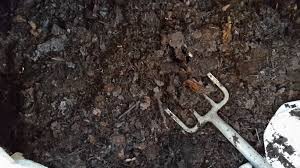
If you’ve been growing bubs and bedding plants, you’re likely have some spent compost at the end of each growing season. To keep waste to a minimum, you can reuse this compost in the garden.
Here’s how;
Soil Amendment – Spent compost can be used as a soil amendment to improve soil structure, moisture retention, and nutrient content. Tip out spent compost, remove any large sections of root and work it back to a smooth texture. Then add handfuls of new compost working to a ratio of 70% spent compost to 30% new compost. You can then mix it into garden beds, raised beds, or container gardens and it can help improve soil fertility over time.
Mulching – Spread the compost around plants as mulch. Mulching helps retain soil moisture, suppress weeds, and gradually release nutrients into the soil as it decomposes.
Composting – Although the used compost has already been through one cycle, it can still be added to a compost pile or bin. It will further break down and contribute organic matter to the compost, enriching it with nutrients.
Top Dressing – Use as a top dressing for lawns. It can help improve soil structure and fertility, leading to healthier grass growth.
Potting Mix- Mix it with other ingredients like perlite, vermiculite, and peat moss to create a custom potting mix for container plants. This mix can provide nutrients and improve water retention in pots.
Vegetable Gardens – Vegetable gardens can benefit from it as it will replenish nutrients depleted by previous crops. It can help improve soil fertility and support healthy plant growth.
Tree and Shrub Plantings – When planting trees and shrubs, mix some spent compost with the backfill soil. This can provide a nutrient boost to the newly planted specimens and improve soil structure around their roots.
However, remember to avoid using spent compost from diseased plants, as it may contain pathogens that could harm new plants. Additionally, if the spent compost was treated with chemicals or pesticides, it may not be suitable for use in gardens or edible crops.









